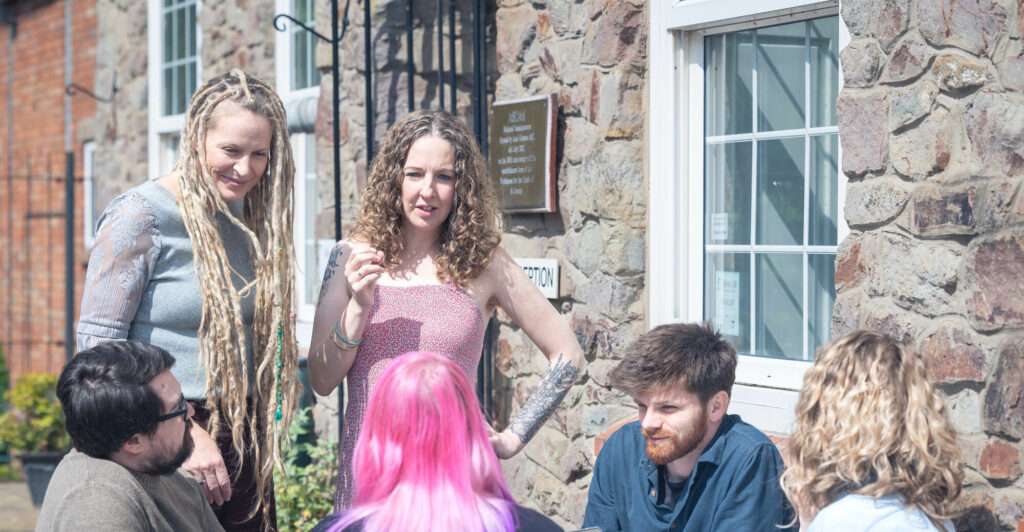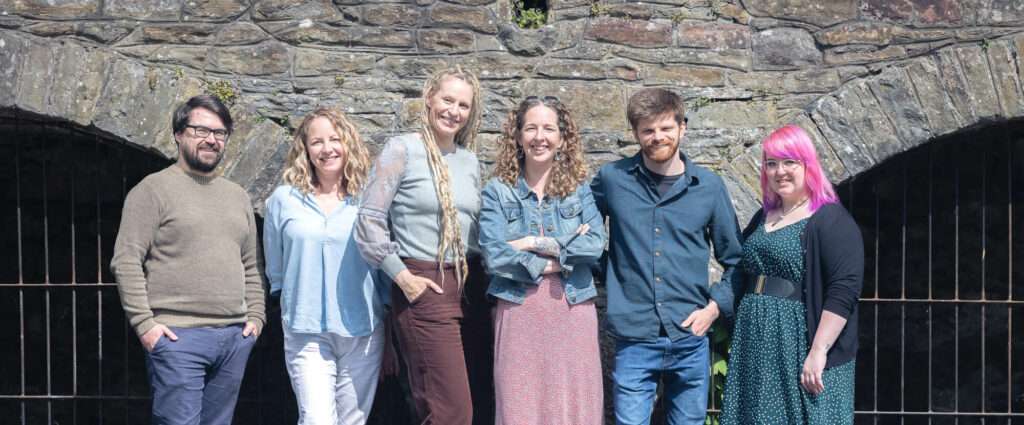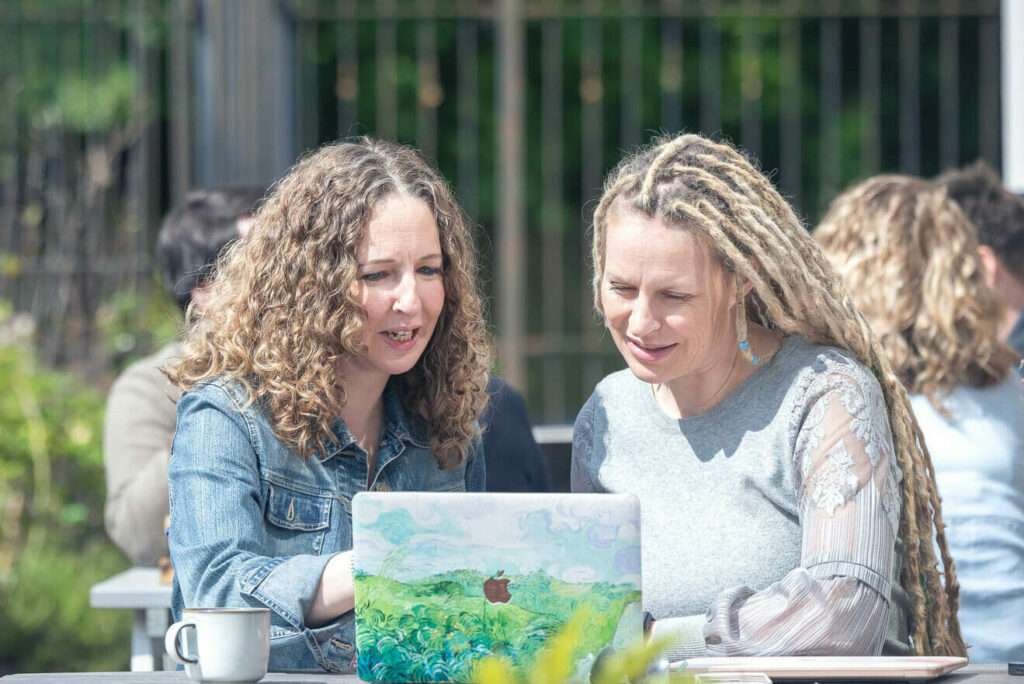

Generative AI and the real challenge for content marketers
Another post about generative AI and content creation – yawn! Except this one isn’t really about AI at all. It’s about two key challenges that existed long before ChatGPT came on the scene, and which AI is simply going to exacerbate. Challenges that content marketers need to have firmly in their sights if they don’t want to become redundant. Here’s the context…
Ever since ChatGPT launched in November 2022, the debate around using generative AI in content creation has been raging. Some people are all for it, some people are convinced that it’s the end of marketing as we know it, some are sticking their heads in the sand and hoping it all goes away.
At RH&Co, we’ve been experimenting with how it could enhance the work we do for our clients – but we’re also keeping on top of the various environmental and social challenges that it AI presents.
The truth is that whatever argument you might make today will probably be out of date tomorrow, since the technology is changing so fast. There is one thing we can be pretty sure of though, and that is the fact that AI is going to exacerbate two problems content creators already face: noise and cynicism.
TL:DR
- Noise: The rise (and rise) of content marketing
- How AI is adding to the content noise
- Cynicism: who are you to tell me?
- How AI is adding to the cynicism challenge
- How to create content that breaks through the noise and cynicism
Noise: the rise (and rise) of content marketing
In ye olde times (ie the 20th century) content marketing as we know it didn’t really exist. In fact, according to the Content Marketing Institute, the term was first used in 2001. Back then, publishing content was by and large the preserve of media organisations, and only a fraction of businesses even had websites.
Then, in 2003, WordPress and Squarespace launched. Overnight, creating a website became accessible to pretty much anyone. Two years later, YouTube was born, then Twitter the year after that, and content creators had two new platforms through which to share their work.
Since then we’ve seen an explosion of tools and channels with which to produce and distribute content, each one adding to the noise. Today, the amount of content being published on a daily basis is practically unquantifiable. Millions of tweets, blogs, LinkedIn posts, Medium articles, Tiktok videos, Insta reels created and shared every month.

How AI is adding to the content noise
Generative AI tools – from Chat-GPT and Jasper to DALL-E and Runway – are making it easier to produce high volumes of content at speed.
According to Hubspot’s ‘AI trends for marketers 2023’ report, 48% of marketers now use generative AI for creating content. Although 96% go on to edit the copy generated, it saves them an average of 3 hours per piece, meaning they can produce more.
Whether any of it is any good isn’t really the point – bad content existed before AI too. The point is that with everyone able to produce more content, more quickly, there’s more noise, which makes it even harder for marketers to make their brand’s voice heard.
You need people to trust that you know what you’re talking about, otherwise they’ll scroll straight past or click away without hesitation.
Cynicism: who are you to tell me?
A second side effect of the increasing ease with which people have been able to produce and distribute content over the last two and a half decades is the similarly increasing difficulty of policing all that content.
While traditional media has standards to which it has to adhere – at least in theory – those standards don’t exist in nearly the same way when it comes to social media posts, for example. If you want to create a meme and attribute the quote to Albert Einstein, who’s going to ask you to reference your sources?
Just look at the case of Instagram scammer Belle Gibson, who built a personal brand around the fact that she had supposedly “cured herself of cancer” through “clean eating”. Although she was eventually brought to justice, she built up a following of thousands and even launched an app before someone cottoned on to what she was doing.
Likewise, wannabe authors today no longer have to go through the rigours of a formal publishing process – they can simply upload their content to Amazon and use its print-on-demand service. If you want to get a sense of how this has lowered publishing standards, try searching “flat earth book” on Amazon and you’ll see.
In the face of all of this, it’s no wonder that people have stopped asking, “What can you tell me?” and started asking instead, “Who are you to tell me?”

How AI is adding to the cynicism challenge
Thanks to AI, we’ve now gone from a world of fake news to one of deep fakes. Images of public figures doing things they never did – like the video of Australian businessman Dick Smith supposedly promoting an investment opportunity.
There’s an AI Instagram influencer making thousands of pounds a month even though she literally doesn’t exist in real life – and even reportedly getting asked out by celebrities who have no idea she’s not real.
And it’s not just the intentional misinformation that’s an issue. Like many others, we came across an example of AI’s willingness to play fast and loose with truth when our very own James Matthews asked a newly launched ChatGPT to recommend three episodes of his podcast, The Moisture Farm Report.
It selected three – except none of them actually existed. When challenged, rather than admit it couldn’t find any information – the podcast was launched in October 2021 and therefore wasn’t included in the data that iteration of ChatGPT had been trained on – it simply kept inventing new episodes.
Bad sources have always been a problem in content but blatant AI hallucinations are giving people more and more reasons to question what they read online.
How to create content that breaks through the noise and cynicism
Whether you use generative AI to help you in the content creation process isn’t really the issue – it’s how you cut through the noise and the cynicism that counts.
To do this, your content needs to be unique and it needs to be credible. You need to be able to add genuine value and you need people to trust that you know what you’re talking about, otherwise they’ll scroll straight past or click away without hesitation.
One of the best ways you can create content that ticks all of these boxes is to involve subject matter experts in creating content campaigns.
These subject matter experts might be internal – if you work within a consultancy firm then it’s your consultants, for a SaaS platform it might be the CTO or product lead, in a restaurant it’s the chef. Or they could be external – partners, influencers, users.
By harnessing their unique insights and experiences, your content becomes exclusive – something no other brand could produce. And the content becomes a platform on which you can layer other brand building activities, from media opportunities to speaking engagements, sales outreach campaigns and so on.
If you’re interested in learning more, read our guide on how to involve experts in content creation, or get in touch to see how we can support you to create content that cuts through the noise and the cynicism.
Back to hompeage









